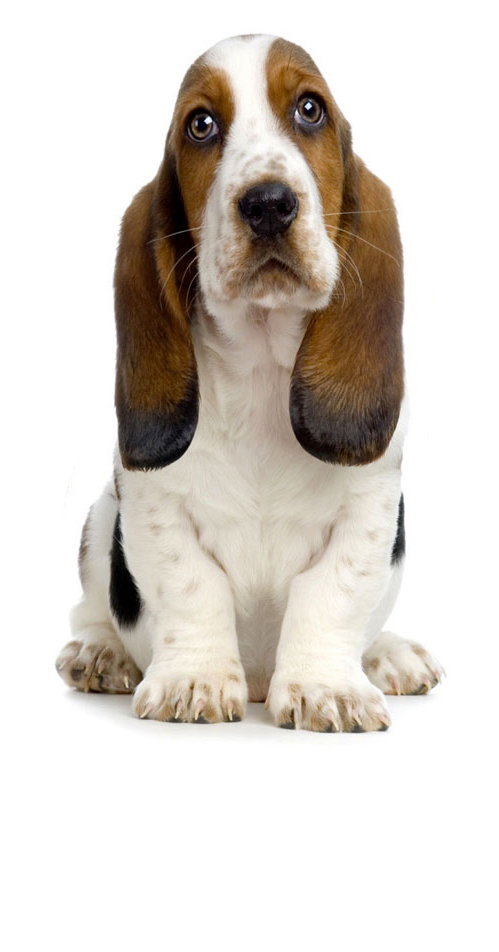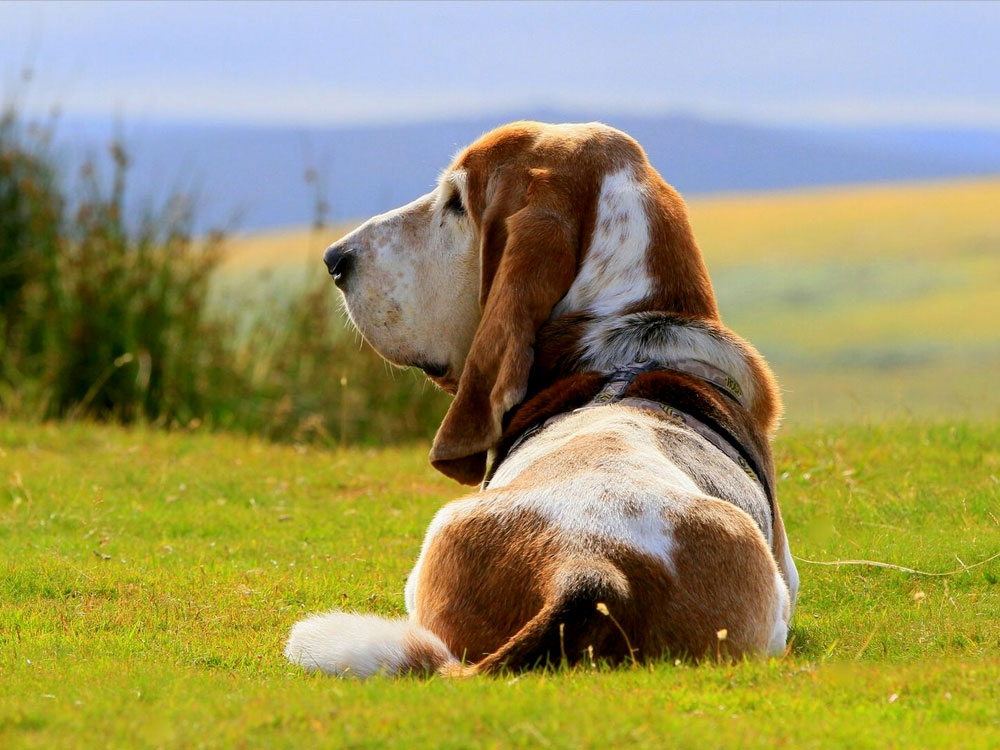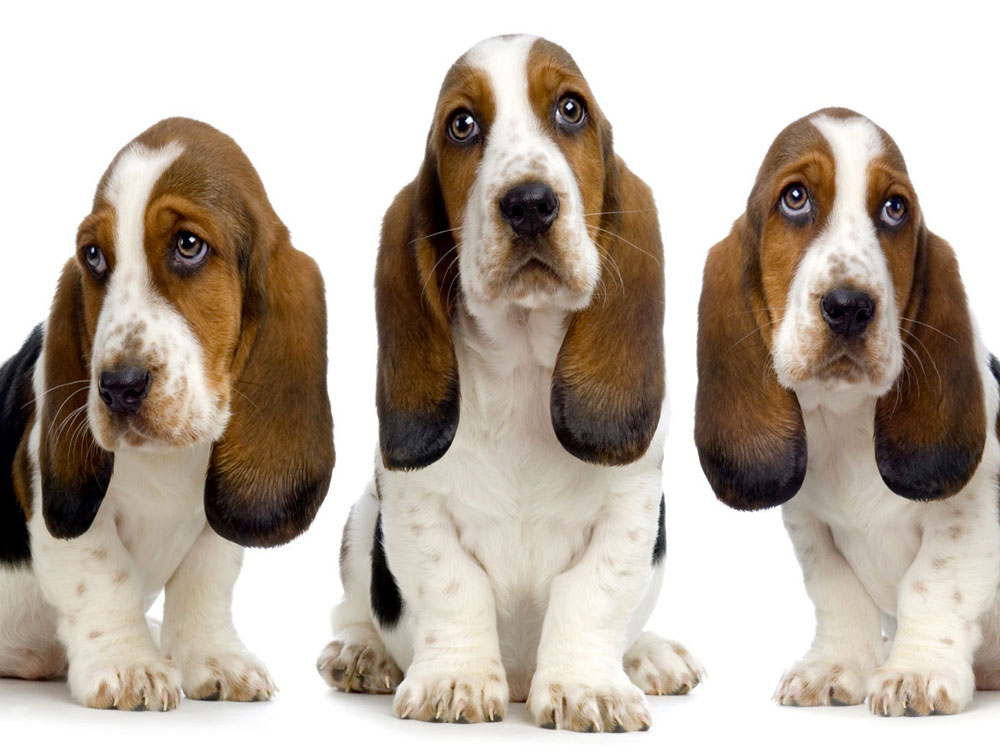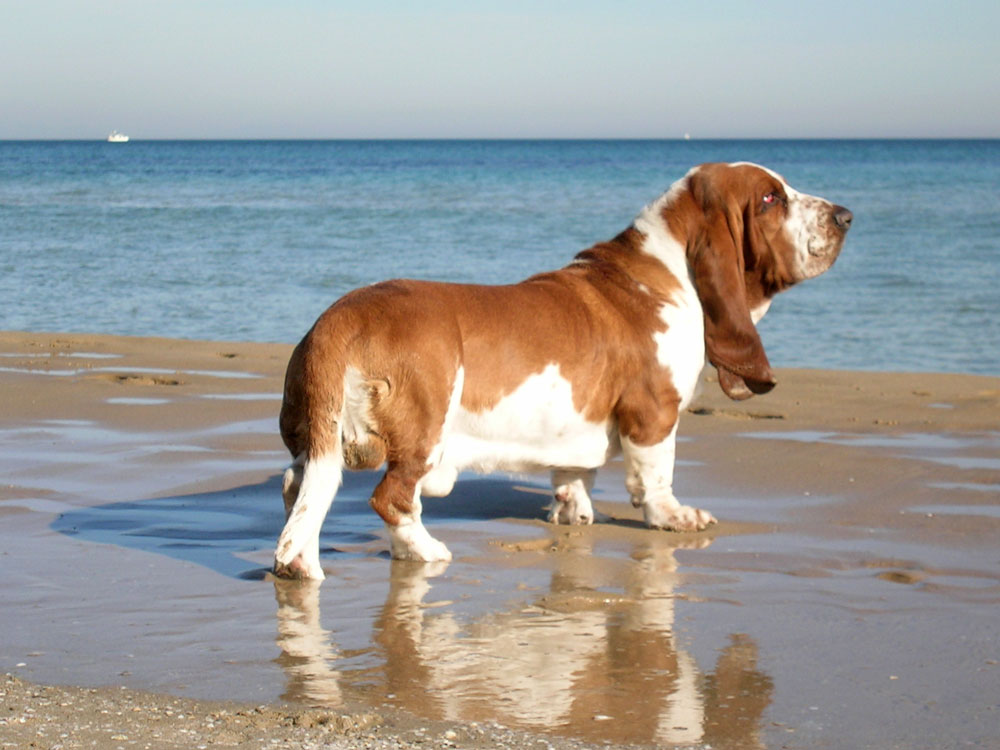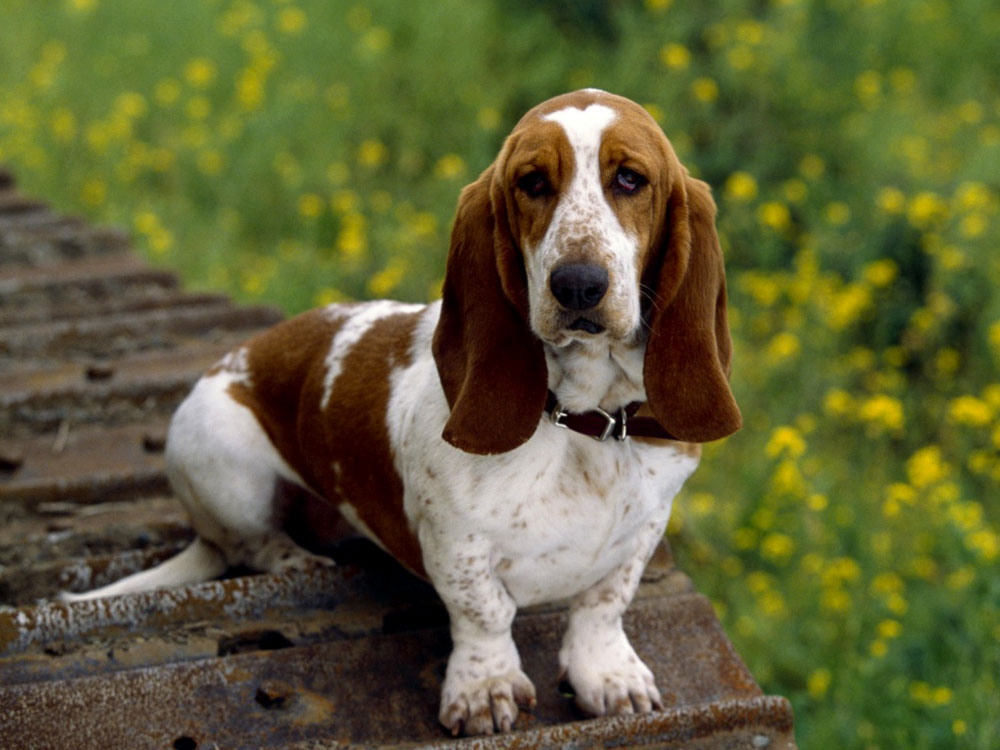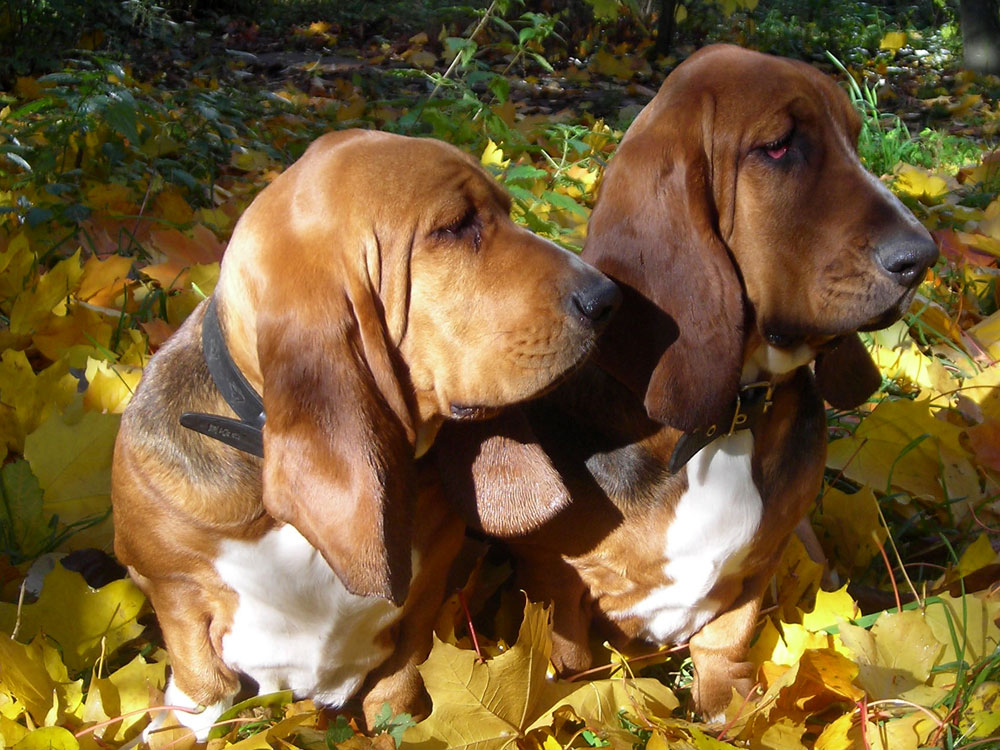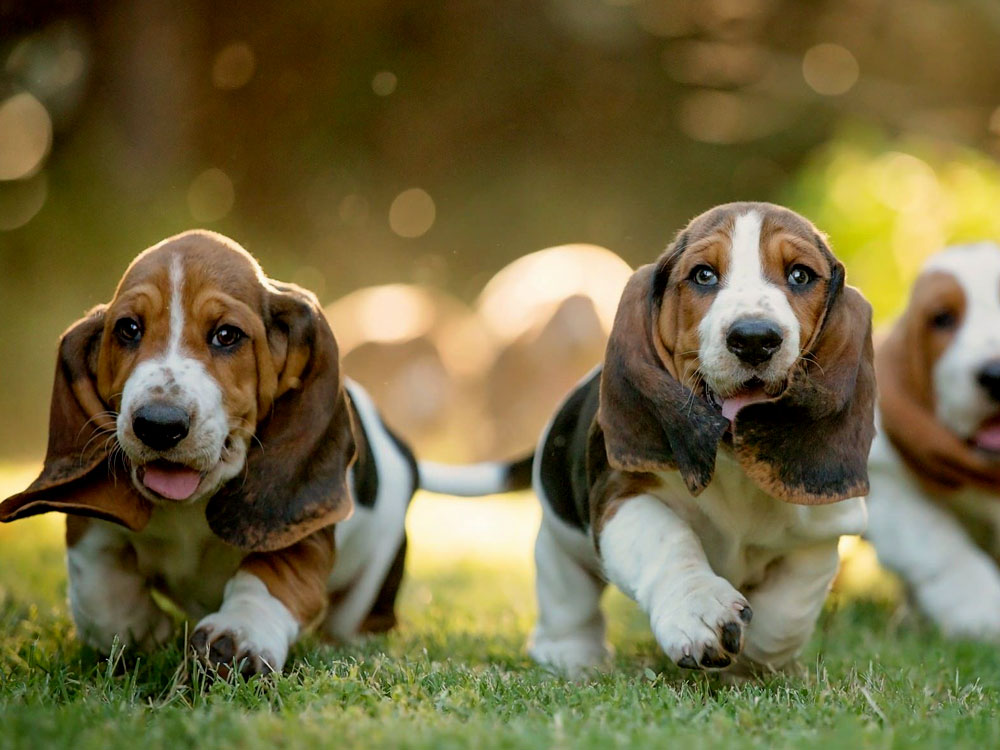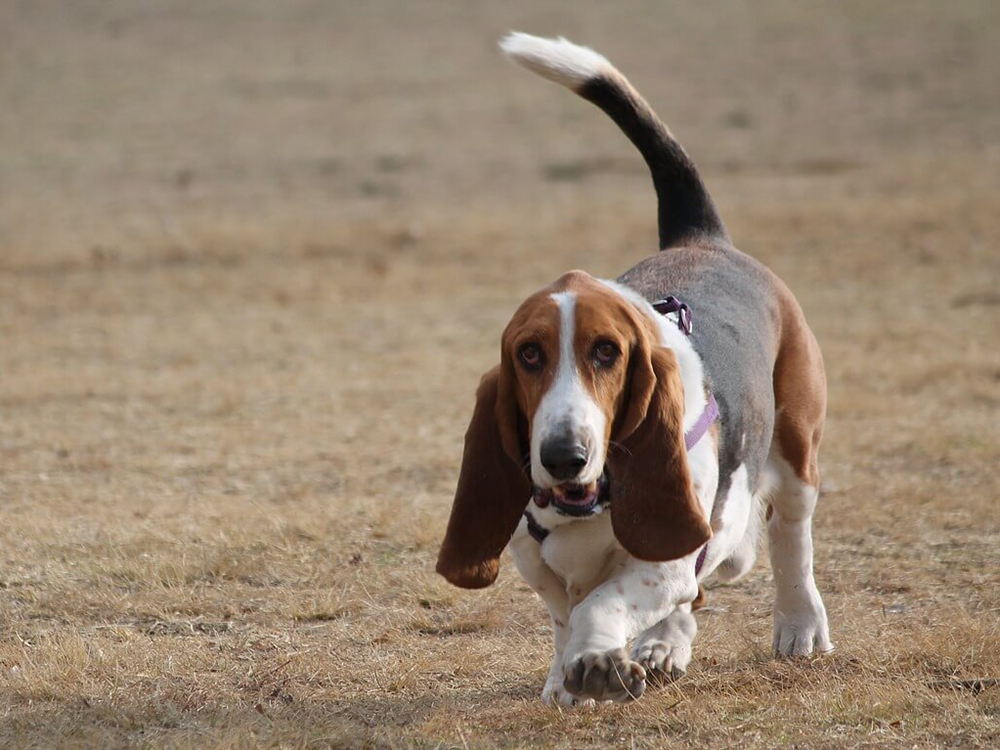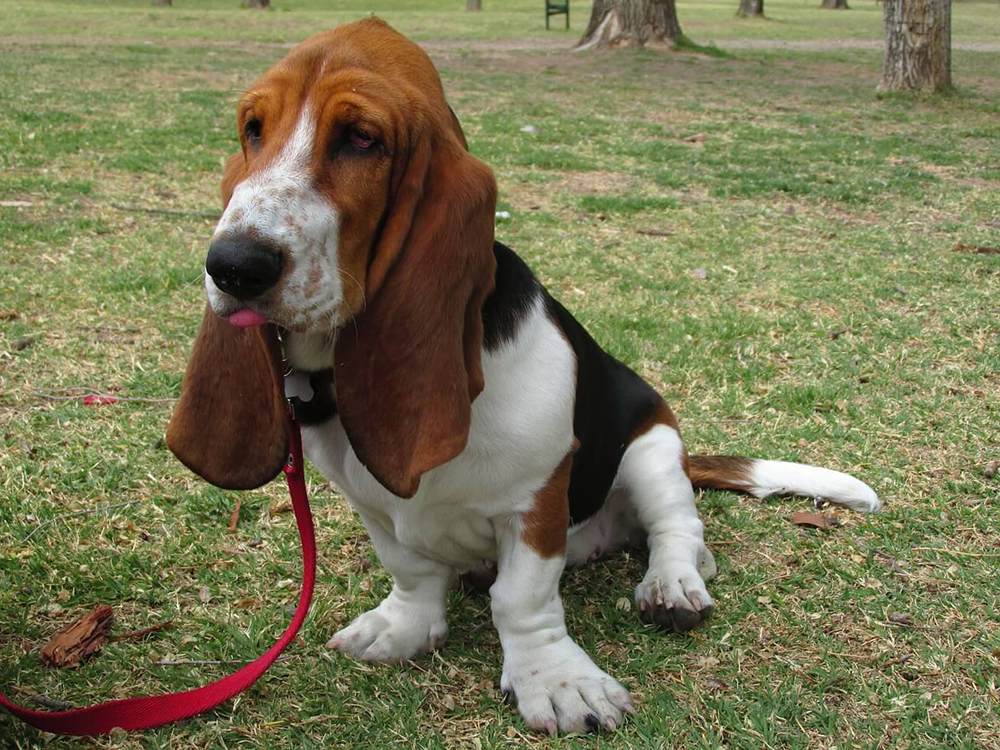
Basset Hound Breed Pictures
Vital Breed Stats
| Height: | 30 - 38 cm M | 30 - 38 cm F |
| Weight: | 14 - 23 kg M | 10 - 20 kg F |
| Breed Group: | Toy Dog Group |
| Life Expectancy: | 10 - 13 years |
| KC Registered: | No |
Breed Characteristics
| Size: |  |
| Grooming: |  |
| Exercise Level: |  |
| Trainability: |  |
| Barking Level: |  |
| Good with Children: |  |
| Good with other pets: |  |
| Affectionate: |  |
| Protective: |  |
| Cost to Keep: |  |
Give a thumbs up if you love the Basset Hound

0
More About the Breed
History
The Basset Hound is a short-legged breed that is believed to have descended from the St. Hubert hound. Its name comes from the French word bas, which means low. The basset was popular with the French nobility and later on became a hunting dog of commoners after the French Revolution. It was used to track small animals in places that horses could not reach.
Sir Everette Millais first brought a basset named Model to England in 1874. He started a breeding programme independently and sought the help of Lord Onslow and George Krehl. He was then referred as the father of the basset breed in England for his efforts.
The Kennel Club in England recognised the breed in 1882 and the English Basset Hound Club was established in 1884.
Appearance
The Basset Hound weighs 50–65 pounds, and stands 33–35 centimetres at the withers. It is known for its short stature caused by the genetic condition osteochondrodysplasia (abnormal growth of the bone and cartilage). However, it is well-balanced, active, and strong, which makes it a good working hound. The breed has a thick body, a domed head, and big, long, low-set ears.
The Basset has a short, smooth, and hard-textured coat that is water and dirt repellent. According to the Kennel Club, the standard colours are tricolour of black, white, and tan, and bicolour of lemon and white. Any recognised hound colour is also acceptable.
Grooming
Temperament
Intelligence
Nutrition
Typical calorie needs of an adult Basset Hound per day:
- Senior and less active: up to 1,000 calories daily
- Typical adult: up to 1,230 calories daily
- Physically active/working dog: up to 1,960 calories daily
Another source of energy, as well as for metabolism regulation, is carbs. However, since this breed is prone to obesity, control the amount and choose the good kind of carbs. See to it that they come from barley, oats, sweet potatoes, and complex carbs. Steer clear from refined, starchy fillers like corn, wheat, and soy.
Feeding
Health
- Gastric Dilatation Volvulus (GDV) or bloat
- Von Willebrand disease
- Panosteitis
- Thrombopathia
- Hip Dysplasia
- Patellar Luxation
- Intervertebral Disc Disease
- Allergies
- Ear infections
- Obesity
- Glaucoma
- Cherry eye and other eyelid and eyelash problems
Exercise
Cost of Ownership
To acquire a well-bred Basset Hound puppy, expect to spend £700–£900. Insurance may cost about £27 (basic) to £65 (lifetime) a month. The food costs may reach about £40–£60 monthly. For vaccinations, boosters, annual checks, and other veterinary costs, pet care costs may add up to more than £1,000 annually.
On average, a basset owner will spend about £80–£120 each month. The insurance costs can also affect the cost estimates. For its lifetime (10–12 years), the costs can be as low as £9,600 to as high as £17,280 overall. This range does not include the expenditures incurred in acquiring a puppy.
Is a Basset Hound Right for You?
- The Basset Hound is a laid-back, intelligent, and friendly dog that is great with children and makes a wonderful family pet.
- It tends to be stubborn, so it needs much positive reinforcement in training in order to respond well.
- This canine is easy to groom because its coat is short-haired and sheds minimally.
- The basset needs a lot of space to roam about.
